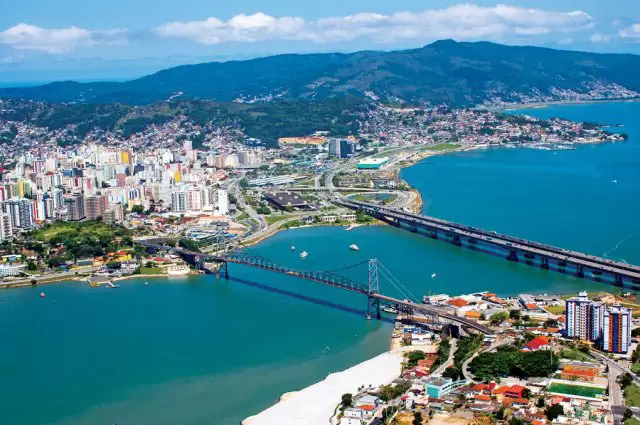- Joined
- Jan 17, 2010
- Messages
- 4,522
- Reaction score
- 5,483
Electric cars are crucial, but not enough to solve climate change. We can’t let them crowd out car-free transit options.
By David Zipper

OSLO, Norway — With motor vehicles generating nearly a 10th of global CO2 emissions, governments and environmentalists around the world are scrambling to mitigate the damage. In wealthy countries, strategies often revolve around electrifying cars — and for good reason, many are looking to Norway for inspiration.
Over the last decade, Norway has emerged as the world’s undisputed leader in electric vehicle adoption. With generous government incentives available, 87 percent of the country’s new car sales are now fully electric, a share that dwarfs that of the European Union (13 percent) and the United States (7 percent). Norway’s muscular EV push has garnered headlines in outlets like the New York Times and the Guardian while drawing praise from the Environmental Defense Fund, the World Economic Forum, and Tesla CEO Elon Musk. “I’d like to thank the people of Norway again for their incredible support of electric vehicles,” he tweeted last December. “Norway rocks!!”

I’ve been writing about transportation for the better part of a decade, so all that fawning international attention piqued my curiosity. Does Norway offer a climate strategy that other countries could copy chapter and verse? Or has the hype outpaced the reality?
So I flew across the Atlantic to see what the fuss was about. I discovered a Norwegian EV bonanza that has indeed reduced emissions — but at the expense of compromising vital societal goals. Eye-popping EV subsidies have flowed largely to the affluent, contributing to the gap between rich and poor in a country proud of its egalitarian social policies.
Worse, the EV boom has hobbled Norwegian cities’ efforts to untether themselves from the automobile and enable residents to instead travel by transit or bicycle, decisions that do more to reduce emissions, enhance road safety, and enliven urban life than swapping a gas-powered car for an electric one.

Despite the hosannas from abroad, Norway’s government has begun to unwind some of its electrification subsidies in order to mitigate the downsides of no-holds-barred EV promotion.
“Countries should introduce EV subsidies in a way that doesn’t widen inequality or stimulate car use at the expense of other transport modes,” Bjørne Grimsrud, director of the transportation research center TØI, told me over coffee in Oslo. “But that’s what ended up happening here in Norway.”
And it could happen in other countries, too, including in the United States, where transportation is the single largest source of greenhouse gas emissions. The federal government now offers tantalizing rebates to Americans in the market for an electric car, but nothing at all for more climate-friendly vehicles like e-bikes or golf carts (nor a financial lifeline for beleaguered public subway and bus systems).

Ending the sales of gas-powered cars, as Norway is close to doing, is an essential step toward addressing climate change. But a 2020 study found that even the most optimistic forecasts for global EV adoption would not prevent a potentially catastrophic 2 degree Celsius rise in global temperatures. Reducing driving — not just gas-powered driving — is crucial.
As the world’s EV trendsetter, Norway’s experience offers a bevy of lessons for other nations seeking to decarbonize transportation. But some of those lessons are cautionary.
How Norway fell in love with the electric car

At first glance, Norway’s EV embrace might seem odd. The country lacks a domestic auto industry and its dominant export is, of all things, fossil fuels. Nevertheless, Norway’s unique geography and identity helped put it at the vanguard of car electrification.
Historically, Norway has been mostly rural; as recently as 1960, half the nation’s population resided in the countryside. But as the postwar economy boomed, Norwegians migrated to cities, and especially to their fast-growing, sprawling suburbs (much as Americans did at the time). They also fell hard for the automobile.
“The car was this genius idea for Norwegians,” Ulrik Eriksen, author of the book A Country on Four Wheels, told me over dinner in Oslo, after stashing his cargo e-bike. “Because there is plenty of land, cars opened up urban space for people to live in, letting more of them get sizable single-family homes.”
Norway embarked on a road-building binge, constructing bridges over fjords and boring tunnels through mountains to connect downtowns with new neighborhoods on the urban fringe. As Norwegian cities expanded, public transit took a back seat. Bergen, for instance, shuttered its extensive tramway service in the 1960s, dumping some of the trams into the North Sea.
:format(webp):no_upscale()/cdn.vox-cdn.com/uploads/chorus_asset/file/25045766/GettyImages_1753190518.jpg)
By David Zipper

OSLO, Norway — With motor vehicles generating nearly a 10th of global CO2 emissions, governments and environmentalists around the world are scrambling to mitigate the damage. In wealthy countries, strategies often revolve around electrifying cars — and for good reason, many are looking to Norway for inspiration.
Over the last decade, Norway has emerged as the world’s undisputed leader in electric vehicle adoption. With generous government incentives available, 87 percent of the country’s new car sales are now fully electric, a share that dwarfs that of the European Union (13 percent) and the United States (7 percent). Norway’s muscular EV push has garnered headlines in outlets like the New York Times and the Guardian while drawing praise from the Environmental Defense Fund, the World Economic Forum, and Tesla CEO Elon Musk. “I’d like to thank the people of Norway again for their incredible support of electric vehicles,” he tweeted last December. “Norway rocks!!”

I’ve been writing about transportation for the better part of a decade, so all that fawning international attention piqued my curiosity. Does Norway offer a climate strategy that other countries could copy chapter and verse? Or has the hype outpaced the reality?
So I flew across the Atlantic to see what the fuss was about. I discovered a Norwegian EV bonanza that has indeed reduced emissions — but at the expense of compromising vital societal goals. Eye-popping EV subsidies have flowed largely to the affluent, contributing to the gap between rich and poor in a country proud of its egalitarian social policies.
Worse, the EV boom has hobbled Norwegian cities’ efforts to untether themselves from the automobile and enable residents to instead travel by transit or bicycle, decisions that do more to reduce emissions, enhance road safety, and enliven urban life than swapping a gas-powered car for an electric one.

Despite the hosannas from abroad, Norway’s government has begun to unwind some of its electrification subsidies in order to mitigate the downsides of no-holds-barred EV promotion.
“Countries should introduce EV subsidies in a way that doesn’t widen inequality or stimulate car use at the expense of other transport modes,” Bjørne Grimsrud, director of the transportation research center TØI, told me over coffee in Oslo. “But that’s what ended up happening here in Norway.”
And it could happen in other countries, too, including in the United States, where transportation is the single largest source of greenhouse gas emissions. The federal government now offers tantalizing rebates to Americans in the market for an electric car, but nothing at all for more climate-friendly vehicles like e-bikes or golf carts (nor a financial lifeline for beleaguered public subway and bus systems).

Ending the sales of gas-powered cars, as Norway is close to doing, is an essential step toward addressing climate change. But a 2020 study found that even the most optimistic forecasts for global EV adoption would not prevent a potentially catastrophic 2 degree Celsius rise in global temperatures. Reducing driving — not just gas-powered driving — is crucial.
As the world’s EV trendsetter, Norway’s experience offers a bevy of lessons for other nations seeking to decarbonize transportation. But some of those lessons are cautionary.
How Norway fell in love with the electric car

At first glance, Norway’s EV embrace might seem odd. The country lacks a domestic auto industry and its dominant export is, of all things, fossil fuels. Nevertheless, Norway’s unique geography and identity helped put it at the vanguard of car electrification.
Historically, Norway has been mostly rural; as recently as 1960, half the nation’s population resided in the countryside. But as the postwar economy boomed, Norwegians migrated to cities, and especially to their fast-growing, sprawling suburbs (much as Americans did at the time). They also fell hard for the automobile.
“The car was this genius idea for Norwegians,” Ulrik Eriksen, author of the book A Country on Four Wheels, told me over dinner in Oslo, after stashing his cargo e-bike. “Because there is plenty of land, cars opened up urban space for people to live in, letting more of them get sizable single-family homes.”
Norway embarked on a road-building binge, constructing bridges over fjords and boring tunnels through mountains to connect downtowns with new neighborhoods on the urban fringe. As Norwegian cities expanded, public transit took a back seat. Bergen, for instance, shuttered its extensive tramway service in the 1960s, dumping some of the trams into the North Sea.
:format(webp):no_upscale()/cdn.vox-cdn.com/uploads/chorus_asset/file/25045766/GettyImages_1753190518.jpg)



















